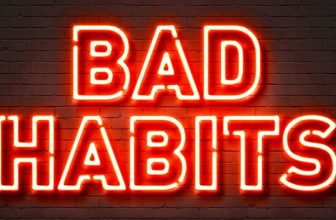
If you have ever performed high-intensity eccentric exercises, soreness and stiffness (DOMS) after the workout might not be anything new to you. However, the pain can sometimes be severe enough that it might affect your sleeping and daily performance in other areas of life. Read on for DOMS: 4 Ways to Recover from Muscle Pain after Training – Quickly!
1. Myofascial Massage for Muscle Pain
Foam roller massage not only improves your flexibility, but it also helps the damaged muscle tissues to recover faster.
The most effective way is to spend five to ten minutes, focusing on the muscle groups targeted during the workout. Perform the movement slowly and smoothly, while targeting the stiffest parts of the muscles. Avoid rolling over your lower back and joints because it may lead to injuries. It might be uncomfortable, but everyone can stick to it for at least a short period of time.
2. Active Recovery
Approximately ten to fifteen minutes of low-intensity exercise after a challenging workout is a great way to end the session.
Active recovery normalizes blood circulation in the body and enhances the healing process of damaged muscles. It consists of various exercises or activities of low intensity. If you have been training your legs, for example, 8-15 minutes of low-intensity walking or treadmill cardio is a suitable option for cooling down. If the training was for the upper body – a few light minutes on the rowing machine or swimming would do the same job.
3. Static Stretching
At the end of an intense workout, it is vital to slow down your heart rate, preferably not simply with an abrupt cessation of movement.
Stretching gives the body the necessary time to normalize the heart and respiratory rhythm and improve blood circulation. It leads to cooling of the muscles and proper recovery. Stretching exercises appear as a “bridge” between the end of training and the beginning of the recovery process. They ensure that the transmission happens smoothly and gradually.
The most efficient way to perform static stretching is to move a muscle to the end of its range of motion and to maintain that position without pain for up to 30 seconds. Repeat this 2 to 3 times for each body part you’ve selected.
4. Nutritional Supplements
For instance, Omega-3 fatty acids, on which I will pay special attention here. A recent study demonstrated the positive effect of polyunsaturated omega-3 fatty acids on the functions of anabolic hormones and their positive role in muscle growth and recovery.
Another study proved that due to their anti-inflammatory properties, taking 1000mg to 3000mg of omega-3 per day significantly reduces muscle pain after strength training.
Even if you don’t have the inclination or ability to invest in the wide range of various nutritional supplements for recovery, by including a few omega-3 pills a day into your diet, you can significantly improve your recovery.









